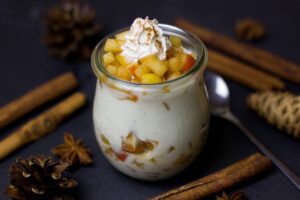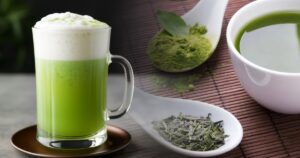Get Up to Date With Nitrous Oxide And Molecular Gastronomy
The Biggest Cream Charger Knowledge Base Online
If you have ever gone to fine dining, you might have realized that kitchens are no more boring but creative and artistic. All because of nitrous oxide.
Cocktails in ice spheres, geometric jellies, perfect mousses, and mango foams are just examples of the marvelous things N2O tanks and molecular gastronomy can achieve together.
This guide will dive into molecular gastronomy by pointing out two unique creations using nitrous oxide. Don’t miss it!
Shop Products

Most Common Terms For Molecular Gastronomy
In the modern jargon of chefs and many food enthusiasts, molecular gastronomy occupies a special place, and how not? It is a beautiful way to achieve magical outcomes in the kitchen. But what is it, and why is it so special? Let us tell you more about it!
Molecular gastronomy is a culinary art that blends physics and chemistry to transform the tastes and textures of food. In other words, an innovative dining experience.
Formally, the term refers to a scientific discipline that studies the physical and chemical processes that occur while cooking. Still, this phenomenon has social and artistic parts that gain a fancy touch. Therefore, the term can also be translated into ‘modern cuisine,’ ‘modernist cuisine,’ ‘experimental cuisine,’ or even avant-garde cuisine. What is fancier than this last?
As this might sound good for the experience, it also tends to sound inaccessible for many souls. After all, you do not get this fancy at a medium-quality restaurant.
Luckily for you, we bring today two options to show you that molecular gastronomy is just one step ahead of your kitchen.
After all, whatever sticks to the kitchen will always be experimental. So what stops you from trying your avant-garde plate?
2 Most Famous Molecular Gastronomy Techniques Using Nitrous Oxide
Consider hot gelatins, airs, spherical ravioli, sweet foams, mousses, and alcohol-infused cocktails with a cream whipper. The possibilities with molecular gastronomy are endless. Yet, almost none of this would be possible without N2O.
So, what role does nitrous oxide play in making this discipline even greater?
For instance, it can help aerate a mixture, creating a lighter texture and providing a better mouth feel without altering its flavor.
Two great examples of molecular gastronomy techniques where nitrous oxide collaborates are foaming and alcohol-infused cocktails. Continue reading!
Foaming With N2O
Foam is a mass of bubbles formed on or in liquid, typically by agitation or fermentation. Food foam, on the contrary, is created when liquid is mixed with emulsifiers like soy lecithin or agar-agar, as the most known, then placed in a canister with nitrous oxide.
Noted the previous, you need a fat emulsifier, a stabilizer, and a cream whipper to make food foam. In the cream whipper, the nitrous oxide is forced into the liquid or mixture by pressure. The same pressure helps bubbles inside the bottle to expand, thus creating the foam: a light, aerated foam.
Recommendation: You should chill your cream whipper in the fridge for 20 minutes before using it to extend your mixture’s shelf life.
9 Mistakes To Avoid For The Perfect Whipped Cream
Extra: Mousse, whipped cream, and froth in cappuccino are some standard foams. Some other common examples of “set” foams are bread, pancakes, and muffins.
Alcohol-Infused Cocktails With Nitrous Oxide Canisters
Now you know what N2O can do for a single mixture once poured into a charged siphon. What you haven’t discovered is the magic N2O will do on your next big event.
Far from intimidating but rewarding, nitrous oxide can do marvelous things to your desired alcohol drink—for example, a rapid liquor infusion.
Here’s what you do:
An infusion typically involves taking fresh solid ingredients, such as fruits, vegetables, or herbs, and soaking them inside a liquid- often some alcohol or oil. The result: The flavor of the solid ingredient takes on the drink (alcohol), obtaining a unique aroma.
In rapid infusion, you do the same, with the slight difference that you will use nitrous oxide in this case.
Watermelon And Mint Infused Gin
Ingredients:
- 200ml of Dry Gin
- Mint (as many leaves as you like)
- 2-3 sliced chunks of watermelon
- An ExoticWhip cream siphon
- One nitrous oxide canister
Indications:
- Tear the mint leaves before placing them in the whipped cream dispenser. Tearing them will allow the flavors to infuse better.
- Add the watermelon chunks and lightly squeeze them into the bottle. You want the flavor coming out.
- Pour the gin into the bottle and screw back the dispenser’s head. Right after this, place your canister in the cartridge holder. Tighten it correctly without piercing it.
- After you complete all the previous steps, it is time to pierce the canister. To do so, slowly but firmly screw to the right till you hear a hissing noise as the N2O fills the dispenser.
- Now leave the dispenser for as long as you want. The longer you leave it, the stronger the result of the infusion.
We advise you to give the cream siphon a hearty shake for around a minute, leaving it to stand for a few more minutes for great results.
Extra tip: Use a filter/strainer to pour your infused gin into a clean container.
Safety Facts to Use Nitrous Oxide:
- After leaving the liquid for a few minutes, disperse the remaining gas upright. Not upside down, as you don’t want any portion to escape.
- Opening the bottle with some gas inside is not an option; it won’t open anyways. However, if you have the idea of trying, do not! If you attempt to dismantle the dispenser before the gas is all out, this can result in accidents or injuries.
Did you like this guide? Stay tuned for more weekly blogs!




